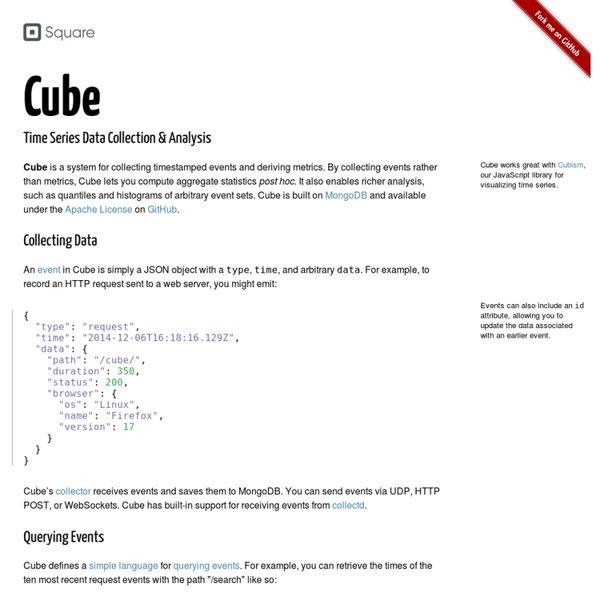Beautiful web-based timeline software
Gephi, an open source graph visualization and manipulation software
RailwayJS
Validations invoked after create, save and updateAttributes, it also possible to skip validations when use save method: Validations can be called manually using isValid method of object Normally all validations result in errors member of object, which is a hash of arrays of error messages: It also can raise exception, if you want, just pass throws: true as param of save method: To setup validation, call it configurator on class: Each configurator accepts set of string arguments, and one optional last argument, which is actually specify how validator should work, of course it depends on each validator, but there's few common options: ifunlessmessageallowNullallowBlank if and unless methods is for skipping validations depending on conditions, it can be function, or string. message member allows to configure error message, it can be string or object (depends on validator), see usage examples allowNull and allowBlank is self explanatory :) Examples of different types of validations: length inclusion
Palo.net - Open-Source BI
SVG Graphics Library for JavaScript HTML5 :jsDraw2DX
addyosmani/backbone-fundamentals - GitHub
Druid | Real²time Exploratory Analytics on Large Datasets
Using Google Charts - Google Charts
Google Charts provides a perfect way to visualize data on your website. From simple line charts to complex hierarchical tree maps, the chart gallery provides a large number of ready-to-use chart types. The most common way to use Google Charts is with simple JavaScript that you embed in your web page. That's all you need to get started. Charts are exposed as JavaScript classes, and Google Charts provides many chart types for you to use. All chart types are populated with data using the DataTable class, making it easy to switch between chart types as you experiment to find the ideal appearance. Ready to create your first chart? Our tools are constantly evolving to better address your needs; we depend on your feedback to help us prioritize which features to include.
tbranyen/backbone-boilerplate - GitHub
Mondrian Documentation
Developer's Guide There are several ways to get Mondrian running. The easiest is to download a binary release, as described in the installation guide. But you can also build Mondrian from its source code. This document describes how to do that, how to learn about Mondrian's inner workings, and the guidelines you'll need to follow if you want to contribute to the Mondrian project. Getting the source code First, you need to get a copy of the source code. Download the latest release Download the latest mondrian-version.zip from SourceForge, and unzip. Clone the Github repository Download the Git client from Git. Clone the Git repository. $ git clone Cloning into 'mondrian'... remote: Counting objects: 51661, done. remote: Compressing objects: 100% (9979/9979), done. remote: Total 51661 (delta 37833), reused 51512 (delta 37691) Receiving objects: 100% (51661/51661), 294.25 MiB | 604 KiB/s, done. Building the code Setting up your environment Example output:
Springy - A force directed graph layout algorithm in JavaScript.
Jed | Gettext Style i18n for Modern JavaScript Apps
Gettext Style i18n for Modern JavaScript Apps Gettext? Gettext is an old translation standard. Safety and Speed Jed parses plural forms using a grammar instead of running eval. You can find a fairly comprehensive list of plural forms here: translate.sourceforge.net/wiki/l10n/pluralforms Sane API Wrappers Sometimes using gettext directly is fine, but knowing which gettext function to call at runtime can often be cumbersome. Jed API The core available functions on an instantiated Jed object are: translate( key ) - Sets the key to translate (often english). onDomain( domain ) - Sets the domain to use in the locale_data. withContext( context ) - Specifies the context prefix for key lookup. ifPlural( num, plural_key ) - Specifies the plural translation path and plural value. fetch( sprintf, style, args ) - the values to interpolate into the response. Jed also exposes all the standard Gettext functions on an instance. Installation Node npm install jed Then in your app: var Jed = require('jed'); Details
Get the Source Code
Using the Project Repository Here you will find the live source control system that holds the Pentaho open source code, available to you with anonymous read access. The projects you can find in this repository are: The Pentaho BI platform, and all projects needed to debug within the PCI The Pentaho Design Studio The Pentaho Report Designer The Pentaho Report Design Wizard Pentaho Data integration (Kettle) Pentaho Report Engine (JFreeReport) Go to for instructions on how to get the Mondrian code. Getting the Source From Subversion We use Subversion as our source code control system. The following URLs are the locations for the various Pentaho projects available in the repository. Trunk - The latest code is in the trunk directory. Branches - Previously released versions are in subdirectories under the branches directory. Tags - Tagged versions of previous builds are located here. Projects Developing in the Pentaho Projects



